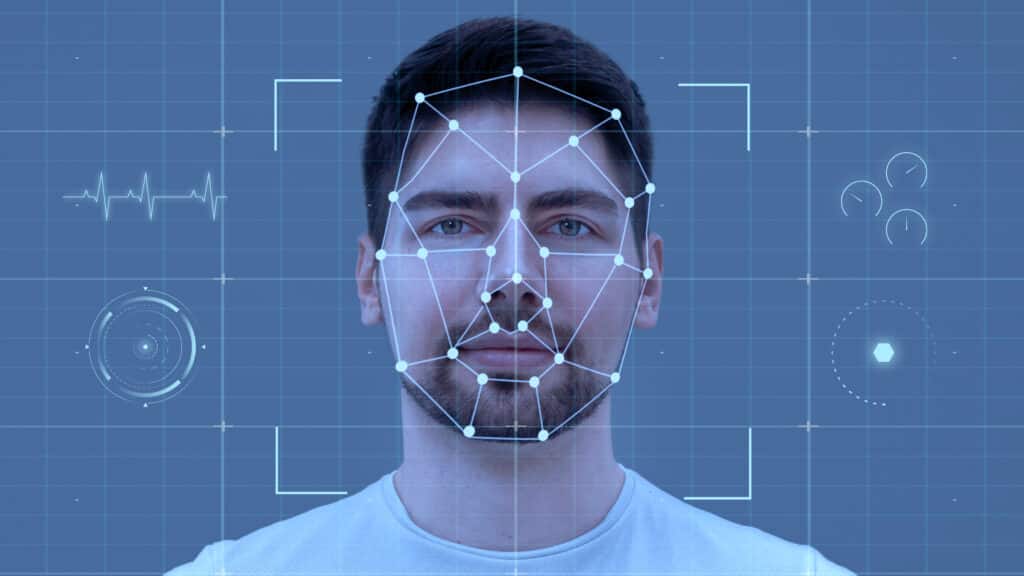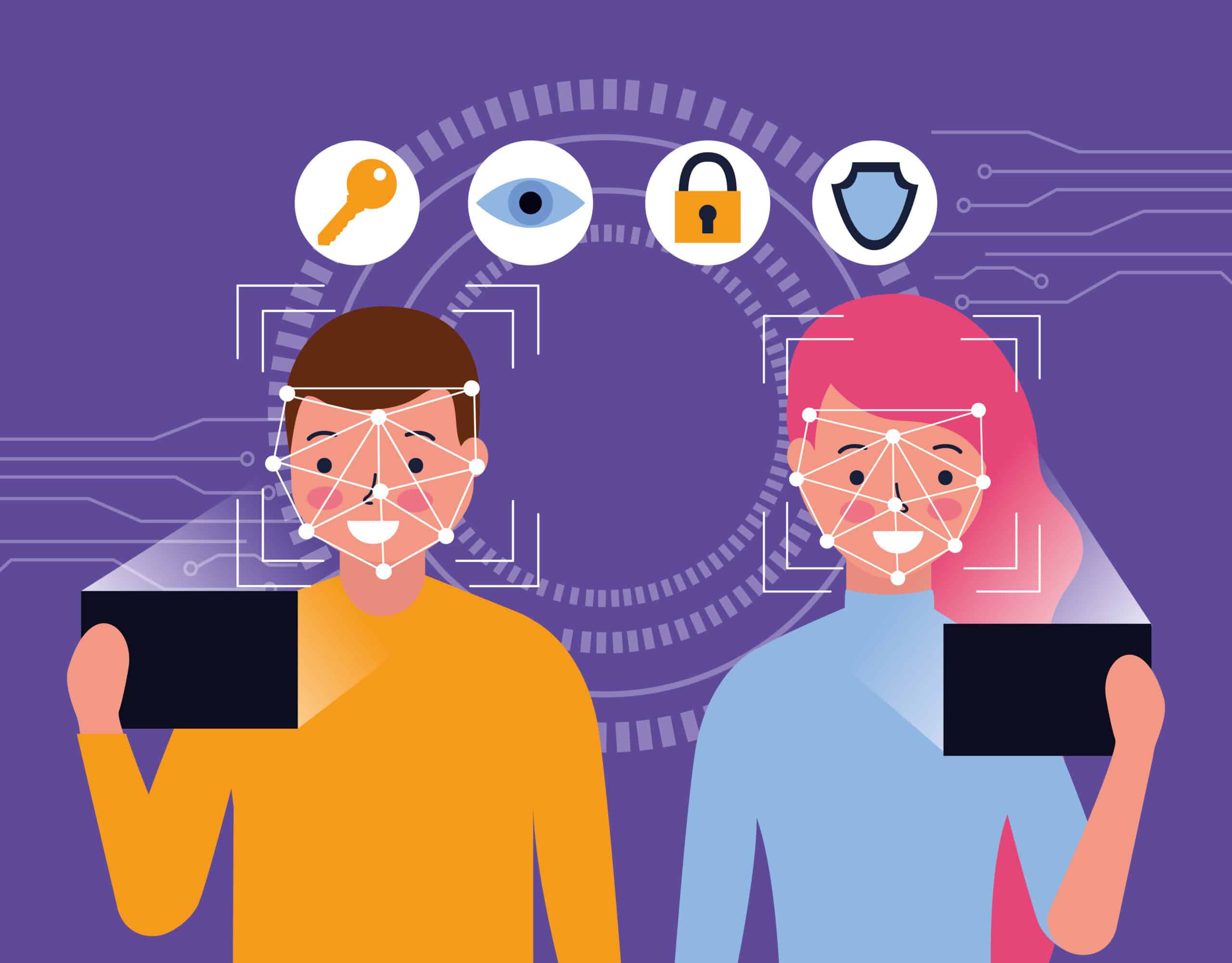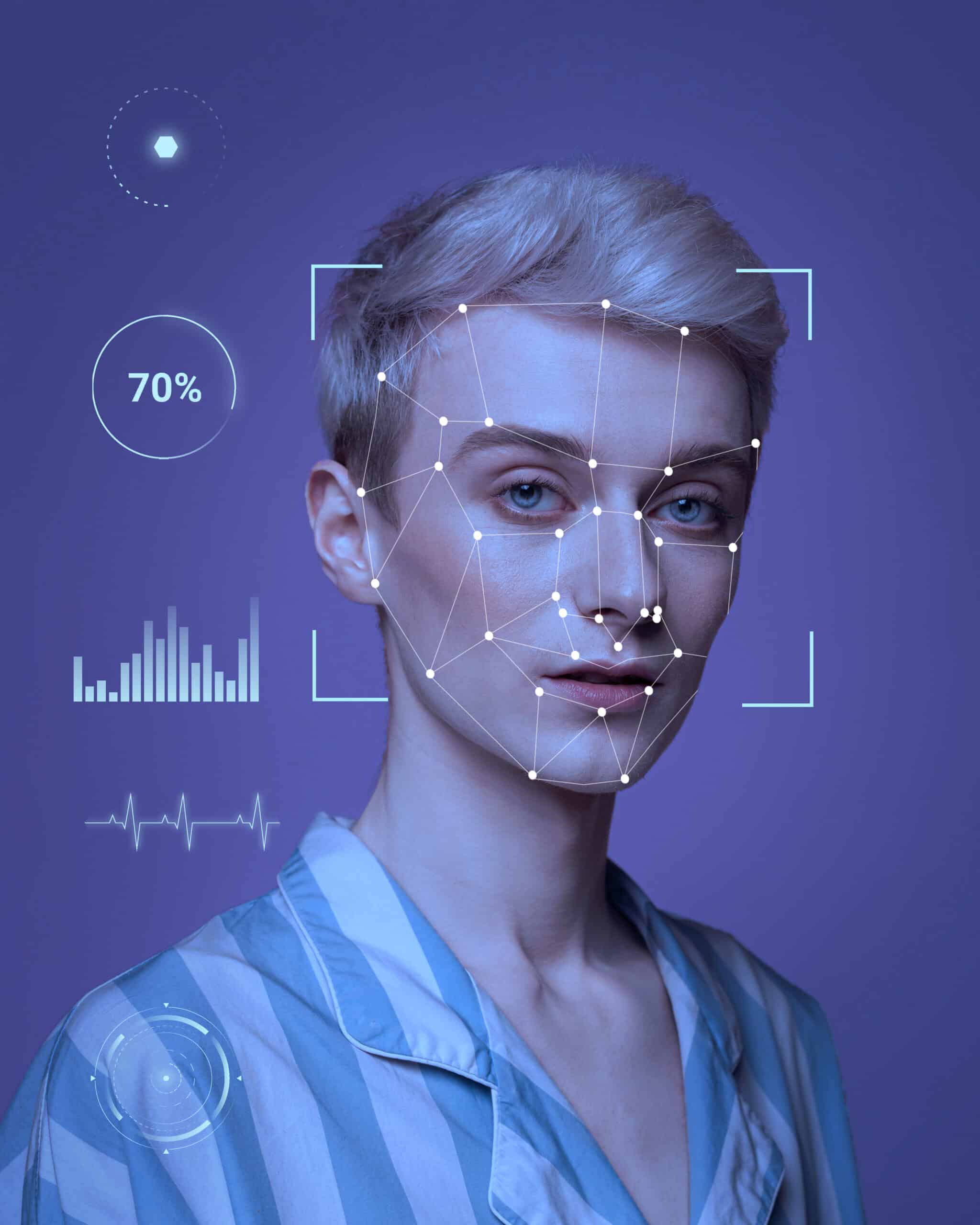Unlocking the Power of Facial Recognition for Secure Banking Identity Verification


Facial recognition technology is revolutionizing the way banks verify customer identities.
We delve into the intricacies of facial recognition identity verification in banking, exploring how this technology works and its importance in enhancing security, user experience, and cost reduction.
Discover the benefits and challenges of implementing facial recognition in banking operations and join us as we discuss the future of facial recognition identity verification, its potential for expanding use cases, and integration with other technologies.
What is Facial Recognition Identity Verification?
Facial Recognition Identity Verification is a cutting-edge technology that combines facial recognition and identity verification processes to provide secure and seamless authentication in various industries, including banking and financial services.
By integrating facial recognition with identity verification, this technology offers a sophisticated way to confirm the identity of individuals accessing sensitive information or conducting transactions within the banking sector. This innovative approach not only enhances security measures by adding an additional layer of protection against unauthorized access but also improves the overall user experience by streamlining authentication processes.
In the context of banking, the utilization of facial recognition for identity verification ensures that only authorized individuals can access their accounts, reducing the risk of fraudulent activities and enhancing trust in the security measures implemented by financial institutions.
How Does Facial Recognition Technology Work?
Facial Recognition Technology operates by capturing facial features through facial images or scans, converting them into biometric data for comparison and authentication, raising concerns about privacy, yet offering robust fraud prevention and effective risk management measures.
This technology works by first capturing a person’s facial characteristics using cameras or other imaging devices. The captured facial data is then processed and analyzed to create a unique biometric profile for that individual. This biometric data is then compared against a database of stored profiles to verify identity.
While the accuracy and efficiency of facial recognition technology have proven beneficial in fraud prevention, some individuals express unease about potential privacy violations. To address these concerns, developers continuously refine the technology to ensure secure data handling and authorization protocols.
Why is Facial Recognition Identity Verification Important in Banking?
Facial Recognition Identity Verification plays a pivotal role in banking by enhancing security, streamlining authentication processes, improving customer experience, and ensuring compliance with regulatory requirements.
This technology has revolutionized the way banks verify the identity of their customers. By using facial recognition, banks can offer a secure and seamless authentication process, reducing the risk of identity theft and fraudulent activities. This not only strengthens the security of banking transactions but also enhances the overall customer experience by eliminating the need for cumbersome verification procedures.
Facial recognition helps banks comply with stringent regulatory standards, such as Know Your Customer (KYC) and Anti-Money Laundering (AML) regulations, emphasizing the importance of maintaining a high level of compliance in the industry.”
What Are the Current Methods of Identity Verification in Banking?
Current methods of identity verification in banking encompass a range of processes such as document verification, knowledge-based questions, and two-factor authentication to verify customer identities and authenticate users effectively.
- Document verification is a widely used method where customers are required to provide official identification documents such as passports or driver’s licenses to confirm their identity.
- Knowledge-based questions involve asking customers personal questions that only they should know the answers to, adding an extra layer of security.
- Another common technique is two-factor authentication, which requires users to provide two different forms of verification, such as a password and a unique code sent to their phone, before accessing their accounts.
What Are the Limitations of Traditional Identity Verification Methods?
Traditional identity verification methods in banking face limitations related to security vulnerabilities, user verification challenges, and the complexity of authentication processes, necessitating the adoption of more advanced and secure verification technologies.
These traditional methods often rely on static information such as passwords, which can be easily compromised in today’s digital landscape. The user verification process through methods like knowledge-based authentication questions or photo identification can be time-consuming and prone to errors.
Addressing these issues calls for the implementation of robust security measures like biometric verification or multifactor authentication to enhance security and streamline the authentication process for both users and institutions.
What are the Benefits of Facial Recognition Identity Verification in Banking?
Facial Recognition Identity Verification offers numerous advantages to the banking sector, including enhanced security measures, innovative authentication techniques, improved customer experience, and streamlined identity verification processes.
This cutting-edge technology not only provides heightened security by accurately identifying customers through facial features but also revolutionizes the authentication process. By incorporating facial recognition, banks can offer a seamless and convenient customer experience, eliminating the need for cumbersome passwords or physical identification cards. The streamlined verification processes reduce wait times and enhance operational efficiency, ultimately leading to a more secure and user-friendly banking environment.
Enhanced Security
Facial Recognition technology in banking offers enhanced security through biometric authentication, ensuring secure transaction processing and accurate identity validation for users.
This advanced technology utilizes unique facial features to authenticate individuals, reducing the risk of unauthorized access and fraudulent activities. By analyzing facial patterns and comparing them with stored data, the system verifies the user’s identity with precision and reliability. This additional layer of security not only protects users’ sensitive information but also streamlines the authentication process, making transactions smoother and more convenient. As a result, banks can provide their customers with a more secure and seamless banking experience, fostering trust and confidence in their services.
Improved User Experience
Facial Recognition Identity Verification enhances the user experience in banking, facilitating digital transformation, building customer trust, and ensuring seamless authentication processes.
This technology allows customers to securely access their accounts with just a glance, eliminating the need for remembering complex passwords or carrying physical identification. By streamlining the authentication process, Facial Recognition not only increases convenience but also enhances security measures.
Its integration into banking services adds a layer of personalization, as customers feel valued when institutions invest in technology that prioritizes their convenience and security. This emphasis on user-friendly, secure authentication methods showcases a commitment to building and maintaining trust with customers in the fast-evolving digital landscape.
Cost Savings
Implementing Facial Recognition Identity Verification in banking operations leads to cost savings by enhancing account protection, preventing fraud, and reducing operational risks through advanced authentication mechanisms.
By utilizing Facial Recognition technology, banks can streamline the verification process, ultimately saving time and resources. This advanced technology provides a secure way to authenticate customer identities, significantly lowering the risk of unauthorized access to accounts. Facial Recognition helps in flagging suspicious activities and potential fraudulent transactions promptly, leading to financial institutions being able to mitigate fraudulent losses effectively. Embracing such innovative solutions not only boosts security measures but also improves customer trust and satisfaction with enhanced peace of mind.
How Can Facial Recognition Technology be Implemented in Banking?
Facial Recognition Technology implementation in banking involves adhering to regulatory requirements, integrating facial authentication technology into existing systems, and ensuring compliance with industry standards.
This technology allows banks to enhance the security of customer accounts by verifying identities through facial biometrics. By incorporating facial recognition technology, financial institutions can streamline the authentication process, making it more convenient for customers to access their accounts while maintaining a high level of security. Strict adherence to regulatory compliance ensures that personal data is safeguarded and prevents unauthorized access to sensitive information. Industry standards play a crucial role in setting benchmarks for the implementation and use of facial authentication technology in the banking sector.
In-branch Verification
In-branch verification using Facial Recognition technology in banking enhances customer security and privacy, providing a personalized and secure environment for customer interactions and transactions.
The adoption of Facial Recognition technology in bank branches not only streamlines the verification process but also adds an extra layer of security by ensuring that only authorized individuals can access sensitive services. This innovative approach reduces the risk of fraudulent activities and identity theft, creating a more seamless and trustworthy banking experience. Customers can feel confident knowing that their identities are protected through advanced facial recognition systems that prioritize user privacy while offering convenience and peace of mind.
Mobile Banking Applications
Facial Recognition integration into mobile banking applications enables streamlined transaction verification, enhances customer satisfaction, and provides secure authentication for mobile banking users.
This innovative technology allows users to conveniently authenticate their transactions simply by using their facial features, eliminating the need to remember complex passwords or enter verification codes. By ensuring a seamless and efficient transaction verification process, facial recognition enhances the overall user experience and reduces the risk of fraud or unauthorized access. Customers appreciate the convenience and added layer of security that facial recognition brings to their mobile banking activities, leading to increased trust in the platform and higher levels of satisfaction.
ATMs and Kiosks
ATMs and kiosks leveraging Facial Recognition technology in remote banking environments utilize machine learning algorithms to enhance data security, offering a convenient and secure banking experience for users.
Facial Recognition technology in ATMs and kiosks has revolutionized the way users interact with banking services by allowing quick and secure access to their accounts without the need for physical cards or passwords. The deployment of machine learning algorithms enables these systems to continuously improve their facial recognition capabilities, ensuring accuracy and reliability in identifying users. This advancement not only enhances convenience for customers but also strengthens data security measures, making transactions safer and more reliable in the evolving landscape of remote banking.”
What are the Concerns and Challenges of Facial Recognition Identity Verification in Banking?
Facial Recognition Identity Verification in banking raises concerns regarding privacy implications, accuracy and bias issues in facial analysis, and the need to ensure regulatory compliance for the responsible use of such technology.
- The implementation of facial recognition systems in the banking sector poses challenges such as safeguarding sensitive customer data from potential breaches and unauthorized access.
- Ensuring the accuracy of facial recognition technology is crucial to prevent mistaken identifications that could lead to security risks and customer dissatisfaction.
- Addressing biases in facial analysis algorithms is essential to prevent discrimination and ensure fair treatment for all individuals.
- Meeting regulatory compliance requirements, such as GDPR and other data protection laws, is paramount to protect customer privacy and data security in the banking industry.
Privacy Concerns
Privacy concerns related to Facial Recognition in banking revolve around data protection, safeguarding personal information stored in facial data repositories, and ensuring secure handling of sensitive data.
To address these concerns, banks and financial institutions implement robust data protection measures such as encryption, regular audits, and restricted access to facial recognition databases. Personal information security is paramount, with strict protocols in place to prevent unauthorized access or misuse of facial data. Facial recognition systems are designed to comply with stringent regulations on data handling, ensuring that individuals’ privacy rights are respected and upheld in the banking sector.
Accuracy and Bias
Accuracy and bias challenges in Facial Recognition for banking involve ensuring precise matching of facial features, mitigating algorithmic biases, and conducting thorough facial analysis for reliable authentication processes.
To enhance the accuracy of facial feature matching, advanced algorithms are used to detect and analyze unique traits such as the distance between eyes, nose shape, and facial symmetry. Bias reduction strategies are implemented through diversifying the dataset used for training the facial recognition system and regularly calibrating the algorithms to minimize discrimination. Detailed facial analysis methods, including 3D mapping and motion detection, are utilized to ensure a high level of security and precision in banking transactions.
Regulatory Compliance
Regulatory compliance challenges with Facial Recognition in banking involve aligning Know Your Customer (KYC) processes, effective identity management, and meeting stringent regulatory requirements to ensure lawful and ethical use of facial recognition technology.
To navigate these challenges, financial institutions must integrate facial recognition technology seamlessly into their existing KYC processes while maintaining customer data privacy and security. Identity management practices play a crucial role in verifying the authenticity of individuals through biometric data, which must adhere to strict regulatory standards to prevent fraud and unauthorized access. Upholding compliance with regulations such as GDPR, PCI DSS, and AML guidelines is paramount to mitigate risks associated with using facial recognition in banking operations.
What is the Future of Facial Recognition Identity Verification in Banking?
The future of Facial Recognition Identity Verification in banking involves extensive integration with other technologies, driving digital transformation in financial institutions, and revolutionizing the authentication landscape for enhanced security and user experience.
As technology advances, facial recognition is set to become even more streamlined and accurate, offering quicker and more secure ways for customers to authenticate themselves. This shift towards biometric authentication methods is reshaping the banking industry, paving the way for improved customer onboarding processes and seamless transactions. Financial institutions are increasingly leveraging facial recognition not only for security purposes but also to personalize customer experiences. The adoption of this technology signifies a significant step towards a more efficient and customer-centric banking environment.
Expansion of Use Cases
The expansion of use cases for Facial Recognition in banking includes applications such as facial mapping for digital identity management, access control systems, and personalized banking services tailored to individual customers.
Facial mapping advancements have revolutionized the way banks authenticate users, providing a secure and convenient means of verifying customer identity. By integrating digital identity verification with facial recognition technology, financial institutions can streamline onboarding processes while enhancing security measures.
Access control solutions utilizing facial recognition not only ensure physical premises’ safety but also improve the overall customer experience by enabling seamless access to banking services. These developments showcase the growing significance of facial recognition technology in modern banking operations.
Integration with Other Technologies
Facial Recognition integration with other technologies in banking combines biometric authentication methods, user consent frameworks, and secure account access protocols to deliver a comprehensive and user-centric authentication experience.
This integration not only enhances security measures in financial transactions but also offers convenience to customers by eliminating the need for traditional methods such as passwords or PINs. By leveraging biometric technology, banks can ensure a higher level of identity verification, reducing the risk of fraud. Incorporating user consent mechanisms ensures that customers have control over the data being shared and used for authentication purposes, enhancing transparency and trust in the banking sector.
As these technologies evolve, the future of banking authentication seems promising with a seamless and secure user experience.
Continued Development and Advancements
The continuous development and advancements in Facial Recognition technology for banking focus on refining facial ID capabilities, enhancing risk assessment processes, and fortifying transaction security measures to adapt to evolving threats and user needs.
This evolution entails not only improving the accuracy of facial ID authentication but also incorporating sophisticated algorithms to detect fraudulent activities promptly. The enhancements in risk assessment mechanisms enable financial institutions to assess potential threats more effectively, ensuring robust monitoring and control. Transaction security fortifications involve implementing multi-factor authentication methods to provide an additional layer of protection against unauthorized access and fraudulent transactions, thereby safeguarding customer assets and maintaining the integrity of the banking system.
Frequently Asked Questions
What is facial recognition identity verification in banking?
Facial recognition identity verification in banking is a process that uses biometric technology to verify a person’s identity through their facial features. This technology compares live images or video of a person’s face to their stored facial data to confirm their identity.
How does facial recognition identity verification work in banking?
Facial recognition identity verification in banking works by capturing an image or video of a person’s face and comparing it to their stored facial data. The technology then analyzes specific facial features, such as the distance between the eyes and the shape of the jawline, to confirm the person’s identity.
What are the potential benefits of using facial recognition identity verification in banking?
There are several potential benefits of facial recognition identity verification in banking, including increased security, faster authentication process, and reduced fraud. This technology can also help banks comply with regulatory requirements for customer identification.
Is facial recognition identity verification safe for banking?
Banking considers facial recognition identity verification safe and secure. This technology uses advanced algorithms and encryption techniques to protect the stored facial data and ensure that only authorized personnel have access to it. It also eliminates the risk of human error and reduces the chances of identity theft.
What are the potential challenges of implementing facial recognition identity verification in banking?
Some potential challenges of implementing facial recognition identity verification in banking include technical issues, such as poor lighting or camera quality, which can affect the accuracy of the technology. There may also be concerns about privacy and the ethical use of biometric data.
How is facial recognition identity verification being used in banking currently?
The banking industry is currently using facial recognition identity verification in various ways. Some banks are using this technology for customer onboarding and authentication, while others are implementing it for fraud prevention and to improve the overall customer experience. ATMs are also using facial recognition to enable cardless transactions and increase security.



